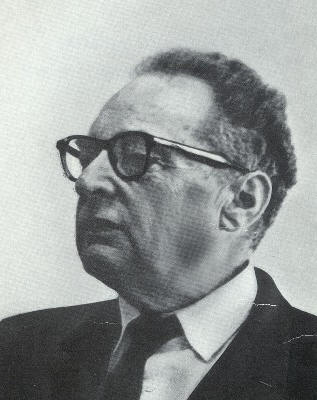Roman Jakobson was a Russian–American linguist and literary theorist. As a pioneer of the structural analysis of language, which became the dominant trend in linguistics during the first half of the 20th century, Jakobson was among the most influential linguists of the century. Influenced by the work of Ferdinand de Saussure, Jakobson developed, with Nikolai Trubetzkoy, techniques for the analysis of sound systems in languages, inaugurating the discipline of phonology. He went on to apply the same techniques of analysis to syntax and morphology, and controversially proposed that they be extended to semantics (the study of meaning in language). He made numerous contributions to Slavic linguistics, most notably two studies of Russian case and an analysis of the categories of the Russian verb. Drawing on insights from C. S. Peirce’s semiotics, as well as from communication theory and cybernetics, he proposed methods for the investigation of poetry, music, the visual arts, and cinema.
Life and work
Jakobson was born in Russia on 11 October 1896[1] to a well-to-do family of Jewish descent, the industrialist Osip Jakobson and chemist Anna Volpert Jakobson,[1] and he developed a fascination with language at a very young age. He studied at the Lazarev Institute of Oriental Languages and then at the Historical-Philological Faculty of Moscow University.[3] As a student he was a leading figure of the Moscow Linguistic Circle and took part in Moscow’s active world of avant-garde art and poetry. The linguistics of the time was overwhelmingly neogrammarian and insisted that the only scientific study of language was to study the history and development of words across time (the diachronic approach, in Saussure’s terms). Jakobson, on the other hand, had come into contact with the work of Ferdinand de Saussure, and developed an approach focused on the way in which language’s structure served its basic function (synchronic approach) – to communicate information between speakers. Jakobson was also well known for his critique of the emergence of sound in film. Jakobson received a master’s degree from Moscow University in 1918.
In Czechoslovakia

1920 was a year of political conflict in Russia, and Jakobson relocated to Prague as a member of the Soviet diplomatic mission to continue his doctoral studies. He immersed himself both into the academic and cultural life of pre-World War II Czechoslovakia and established close relationships with a number of Czech poets and literary figures. Jakobson received his Ph.D. from Charles University in 1930.[1] He became a professor at Masaryk University in Brno in 1933. He also made an impression on Czech academics with his studies of Czech verse. In 1926, together with Vilém Mathesius and others he became one of the founders of the “Prague school” of linguistic theory (other members included Nikolai Trubetzkoy, René Wellek, Jan Mukařovský). There his numerous works on phonetics helped continue to develop his concerns with the structure and function of language. Jakobson’s universalizing structural-functional theory of phonology, based on a markedness hierarchy of distinctive features, was the first successful solution of a plane of linguistic analysis according to the Saussurean hypotheses. (This theory achieved its most canonical exposition in a book co-authored with Morris Halle.) This mode of analysis has been since applied to the plane of Saussurean sense by his protégé Michael Silverstein in a series of foundational articles in functionalist linguistic typology.
Escapes before the war
Jakobson escaped from Prague in early March 1939[1] via Berlin for Denmark, where he was associated with the Copenhagen linguistic circle, and such intellectuals as Louis Hjelmslev. He fled to Norway on 1 September 1939,[1] and in 1940 walked across the border to Sweden,[1] where he continued his work at the Karolinska Hospital (with works on aphasia and language competence). When Swedish colleagues feared a possible German occupation, he managed to leave on a cargo ship, together with Ernst Cassirer (the former rector of Hamburg University) to New York City in 1941[1] to become part of the wider community of intellectual émigrés who fled there.
Career in the United States and later life[edit]
In New York, he began teaching at The New School, still closely associated with the Czech émigré community during that period. At the École libre des hautes études, a sort of Francophone university-in-exile, he met and collaborated with Claude Lévi-Strauss, who would also become a key exponent of structuralism. He also made the acquaintance of many American linguists and anthropologists, such as Franz Boas, Benjamin Whorf, and Leonard Bloomfield. When the American authorities considered “repatriating” him to Europe, it was Franz Boas who actually saved his life. After the war, he became a consultant to the International Auxiliary Language Association, which would present Interlingua in 1951.
In 1949[1] Jakobson moved to Harvard University, where he remained until his retirement in 1967.[1] In his last decade he maintained an office at the Massachusetts Institute of Technology, where he was an honorary Professor Emeritus. In the early 1960s Jakobson shifted his emphasis to a more comprehensive view of language and began writing about communication sciences as a whole. He converted to Eastern Orthodox Christianity in 1975.[4]
Jakobson died in Cambridge, Massachusetts on 18 July 1982.[1] His widow died in 1986. His first wife, who was born in 1908, died in 2000.